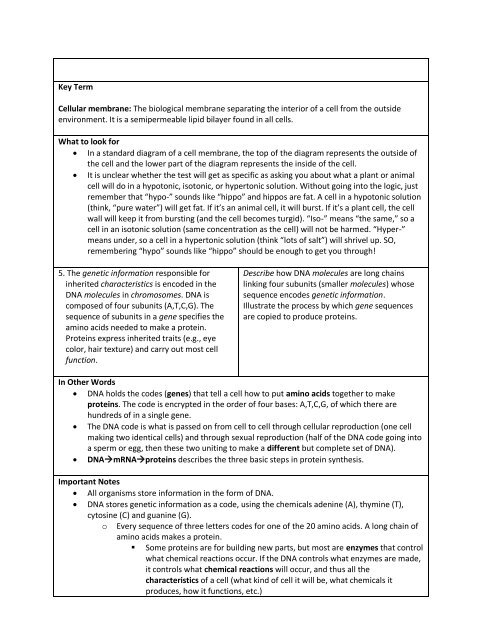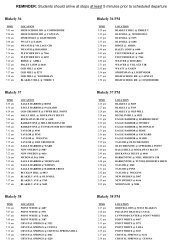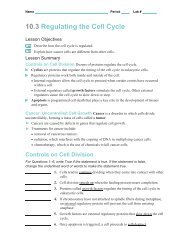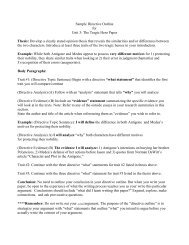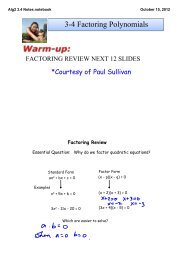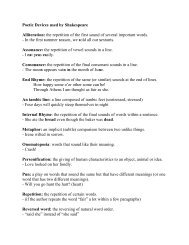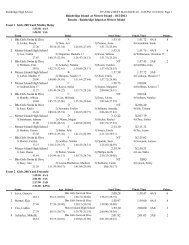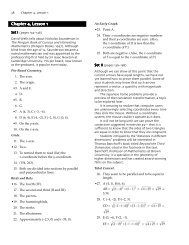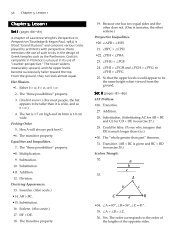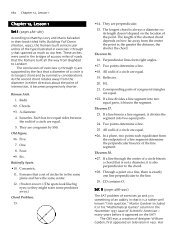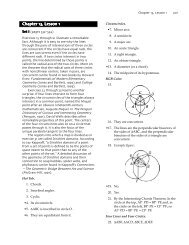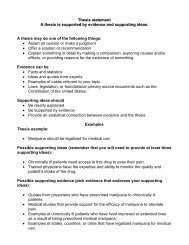Biology EOC Study Guide: Part 2, Cell Biology Content Standards ...
Biology EOC Study Guide: Part 2, Cell Biology Content Standards ...
Biology EOC Study Guide: Part 2, Cell Biology Content Standards ...
Create successful ePaper yourself
Turn your PDF publications into a flip-book with our unique Google optimized e-Paper software.
Key Term<br />
<strong>Cell</strong>ular membrane: The biological membrane separating the interior of a cell from the outside<br />
environment. It is a semipermeable lipid bilayer found in all cells.<br />
What to look for<br />
In a standard diagram of a cell membrane, the top of the diagram represents the outside of<br />
the cell and the lower part of the diagram represents the inside of the cell.<br />
It is unclear whether the test will get as specific as asking you about what a plant or animal<br />
cell will do in a hypotonic, isotonic, or hypertonic solution. Without going into the logic, just<br />
remember that “hypo-” sounds like “hippo” and hippos are fat. A cell in a hypotonic solution<br />
(think, “pure water”) will get fat. If it’s an animal cell, it will burst. If it’s a plant cell, the cell<br />
wall will keep it from bursting (and the cell becomes turgid). “Iso-” means “the same,” so a<br />
cell in an isotonic solution (same concentration as the cell) will not be harmed. “Hyper-”<br />
means under, so a cell in a hypertonic solution (think “lots of salt”) will shrivel up. SO,<br />
remembering “hypo” sounds like “hippo” should be enough to get you through!<br />
5. The genetic information responsible for<br />
inherited characteristics is encoded in the<br />
DNA molecules in chromosomes. DNA is<br />
composed of four subunits (A,T,C,G). The<br />
sequence of subunits in a gene specifies the<br />
amino acids needed to make a protein.<br />
Proteins express inherited traits (e.g., eye<br />
color, hair texture) and carry out most cell<br />
function.<br />
Describe how DNA molecules are long chains<br />
linking four subunits (smaller molecules) whose<br />
sequence encodes genetic information.<br />
Illustrate the process by which gene sequences<br />
are copied to produce proteins.<br />
In Other Words<br />
DNA holds the codes (genes) that tell a cell how to put amino acids together to make<br />
proteins. The code is encrypted in the order of four bases: A,T,C,G, of which there are<br />
hundreds of in a single gene.<br />
The DNA code is what is passed on from cell to cell through cellular reproduction (one cell<br />
making two identical cells) and through sexual reproduction (half of the DNA code going into<br />
a sperm or egg, then these two uniting to make a different but complete set of DNA).<br />
DNAmRNAproteins describes the three basic steps in protein synthesis.<br />
Important Notes<br />
All organisms store information in the form of DNA.<br />
DNA stores genetic information as a code, using the chemicals adenine (A), thymine (T),<br />
cytosine (C) and guanine (G).<br />
o Every sequence of three letters codes for one of the 20 amino acids. A long chain of<br />
amino acids makes a protein.<br />
• Some proteins are for building new parts, but most are enzymes that control<br />
what chemical reactions occur. If the DNA controls what enzymes are made,<br />
it controls what chemical reactions will occur, and thus all the<br />
characteristics of a cell (what kind of cell it will be, what chemicals it<br />
produces, how it functions, etc.)


